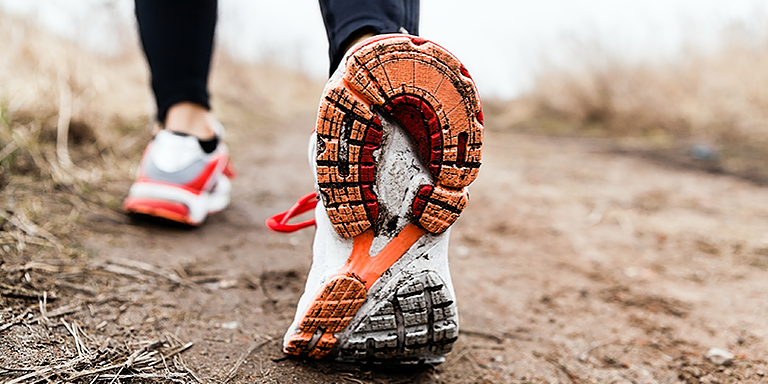Walking for health
Walking is simple, free, and one of the easiest ways to get more active, lose weight and become healthier.
Sometimes overlooked as a form of exercise, walking briskly can help you build stamina, burn excess calories and make your heart healthier.
You don’t have to walk for hours. A brisk 10-minute daily walk has lots of health benefits and counts towards your recommended 150 minutes of weekly exercise.
Before you start
Any shoes or trainers that are comfortable, provide adequate support and don’t cause blisters will do.
If you’re walking to work, you could wear your usual work clothes with a comfy pair of shoes and change shoes when you get into work.
For long walks, you may want to take some water, healthy snacks, a spare top, sunscreen and a sunhat in a small backpack.
If you start going for longer walks regularly, you may want to invest in a waterproof jacket and some specialist walking shoes for more challenging routes.
How do I know if I’m walking fast enough?
A brisk walk is about 3 miles an hour, which is faster than a stroll.
One way to tell if you’re walking briskly is if you can still talk but can’t sing the words to a song.
You could also try using the free Active 10 app on your smartphone.
It tells you when you’re walking fast enough and suggests ways to fit in some more brisk walking.
What if I’m not very active?
If you’re not very active but are able to walk, increase your walking distance gradually.
If your joints are a problem, check whether your local swimming pool holds exercise classes.
The water helps to support your joints while you move, and once you lose a bit of weight, the pressure on your joints will reduce.
If you’re not active because of a medical condition, get advice on exercising with a disability.
Staying motivated
Make it a habit
The easiest way to walk more is to make walking a habit. Think of ways to include walking in your daily routine.
Examples include:
- walking part of your journey to work
- walking to the shops
- using the stairs instead of the lift
- leaving the car behind for short journeys
- walking the kids to school
- doing a regular walk with a friend
- going for a stroll with family or friends after dinner
Listen to music
Walking while listening to music or a podcast can take your mind off the effort. Music can also get you into a rhythm and help you walk faster.
You’ll be surprised at how fast the time goes when you’re walking to your favourite tunes.
Mix it up
Add variety to your walks. You don’t have to travel to the countryside to find a rewarding walk.
Towns and cities offer interesting walks, including parks, heritage trails, canal towpaths, riverside paths, commons, woodlands, heaths and nature reserves.
Join a walking group
Walking in a group is a great way to start walking, make new friends and stay motivated.
Learn More
For more information about physical activity, nutrition, and health, the following sources may be helpful.
- Physical activity and your health. Government of Canada. https://www.canada.ca/en/public-health/services/being-active/physical-activity-your-health.html
- Canadian Physical Activity Guidelines. http://www.csep.ca/CMFiles/Guidelines/CSEP_PAGuidelines_adults_en.pdfn.pdf)
- Healthy Eating. Heart and Stroke Foundation of Canada. https://www.heartandstroke.ca/get-healthy/healthy-eating
- Healthy Weight. Heart and Stroke Foundation of Canada. https://www.heartandstroke.ca/get-healthy/healthy-weight
- Healthy Kids. Heart and Stroke Foundation of Canada. https://www.heartandstroke.ca/get-healthy/healthy-kids
- Canada Food Guidelines (updated 2019). https://food-guide.canada.ca/en/
Source: Information adapted from the National Health Service (UK) open licence.













